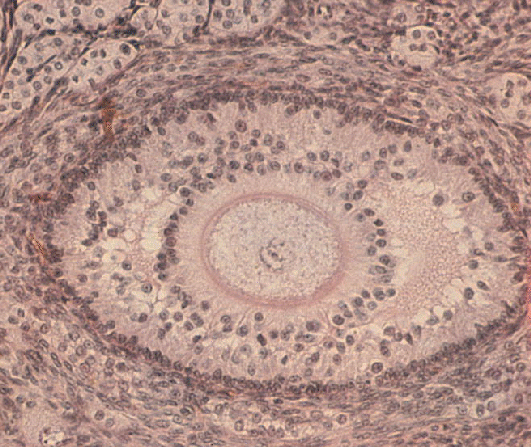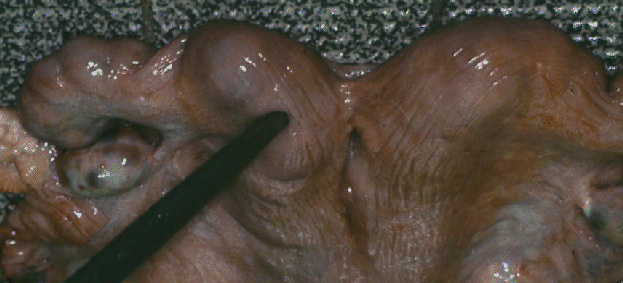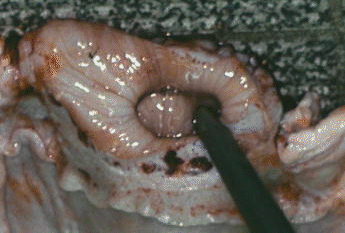- Female mammals have a pair of ovaries located posteriorly
and dorsally
in the abdominal cavity Figure 1-21c.The
image
below shows one ovary of a cow.

- Ova develop in the cortex (outer layer) of the ovary.
Each ripe
ovum is enclosed in a fluid-filled follicle, as shown in the
histological
image below.

At estrus, ova are released into a ciliated funnel
or infundibulum
at the end of each oviduct (fallopian tube).
- The oviduct on each side leads into a horn of the uterus
where embryonic
development takes place. The image below shows one horn of the uterus
of
a cow.

At birth, the offspring emerge through the dilated cervix
and vagina.The
image below shows an undilated cervix of a cow.
- Mammary
glands are derived from highly modified sweat glands of the skin.
The udders of sheep and goats are divided into right and left
halves,
each with a teat. The cow's udder has four quarters so that there are
two
teats on each side. Most sows have seven pairs of mammary glands and a
total of 14 teats. Milk is produced in glandular alveoli, and
it
collects in the cistern of the teat. The bovine udder is
supported
by medial and lateral suspensory ligaments which are dominated by
elastin
and collagen fibers, respectively.








